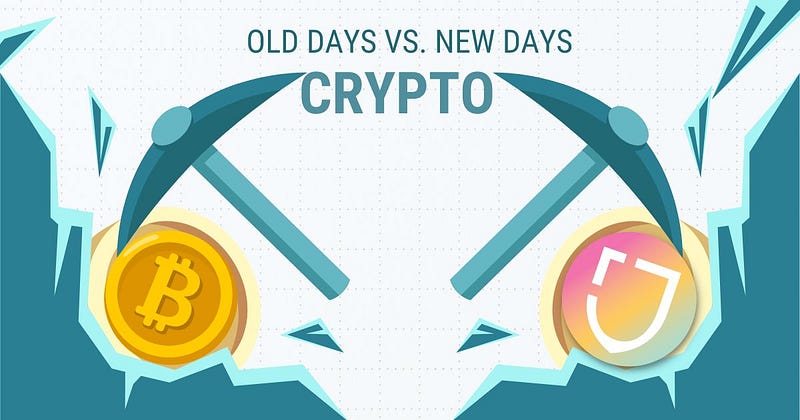The early days of Bitcoin seemed like an underground world. Users were downloading “wallets” from BTC.org, getting some funds from a “faucet,” trading back and forth with other hobbyists, and playing casino style games such as Dragon’s tale to earn extra coins. “Dwolla” used to be a household name for those who needed to exchange or purchase BTC when the token was trading in the $10s — but most folks have never even heard the name before or understand its significance in the history of cryptocurrencies.
Over these past 13 years Bitcoin adoption has increased exponentially with the network’s core functionality remaining relatively unchanged. Unlike ETH, SOL, or Cardano, BTC does not need a huge team of developers to constantly upgrade and fix the network. It has set objectives and will always operate automatically by its core principles — being a transparent network token that can facilitate transfers to anyone regardless of physical border, with a fixed total supply, and a ledger that is always immutable.
Because of this simplistic function, many BTC believers (Maxis) are convinced of its exponential value as traditional fiat (paper) currencies face harsh inflationary pressures from across the globe. This was best seen when BTC skyrocketed to an all-time high of $68,789.63 during the summer of 2021.
But how was the value of BTC first set?
Forbes covered that “The transaction that first gave Bitcoin monetary value was in October 2009, when Finnish computer science student Martti Malmi, known online as Sirius, sold 5,050 coins for $5.02, giving each Bitcoin a value of $0.0009 each.”
This first transaction set the price as hobbyists would just trade back and forth with each other. But it was these first transactions that were essential for developing a healthy marketplace for the token.
Just like the early days of BTC, JTC is following a similar path. The Jurat Network forked Bitcoin on January 8th, 2022 at a blockheight of 717808, and subsequently airdropped Jurats (JTC) to every owner of bitcoin at that time. The main purpose of Jurat (or JTC) is a consumer protection version of Bitcoin that provides additional transaction versatility under the auspices of a court. When you transact in JTC, you can recover your funds in the event of fraud or mistake, similar to using a credit card.
This provides a huge opportunity for users who want to hold their BTC for long term value, and spend their JTC instead.
To get started, users have to claim their JTC by downloading the Jurat wallet. If you don’t have any JTC, the network is helping facilitate the process by allowing users to cover their first transaction on the chain and receive a reward with a campaign focused on spending JTC.
You can buy whatever you’d like: A car, house, laptop, or cup of coffee. Of course you probably don’t want to spend 10,000 JTC (BTC) on pizzas like Laszlo Hanyecz did in 2010….but you get the idea!
We are committed to building an organic market for $JTC no matter how long it takes. While the entire crypto market may be down and delaying the progress, we believe the demand will only grow with the progress of cryptocurrency adoption.
If you want to learn more you can visit our website, Juart.io and join our community through the Jurat Early Adopters Club.
We look forward to seeing what you buy with your JTC!



